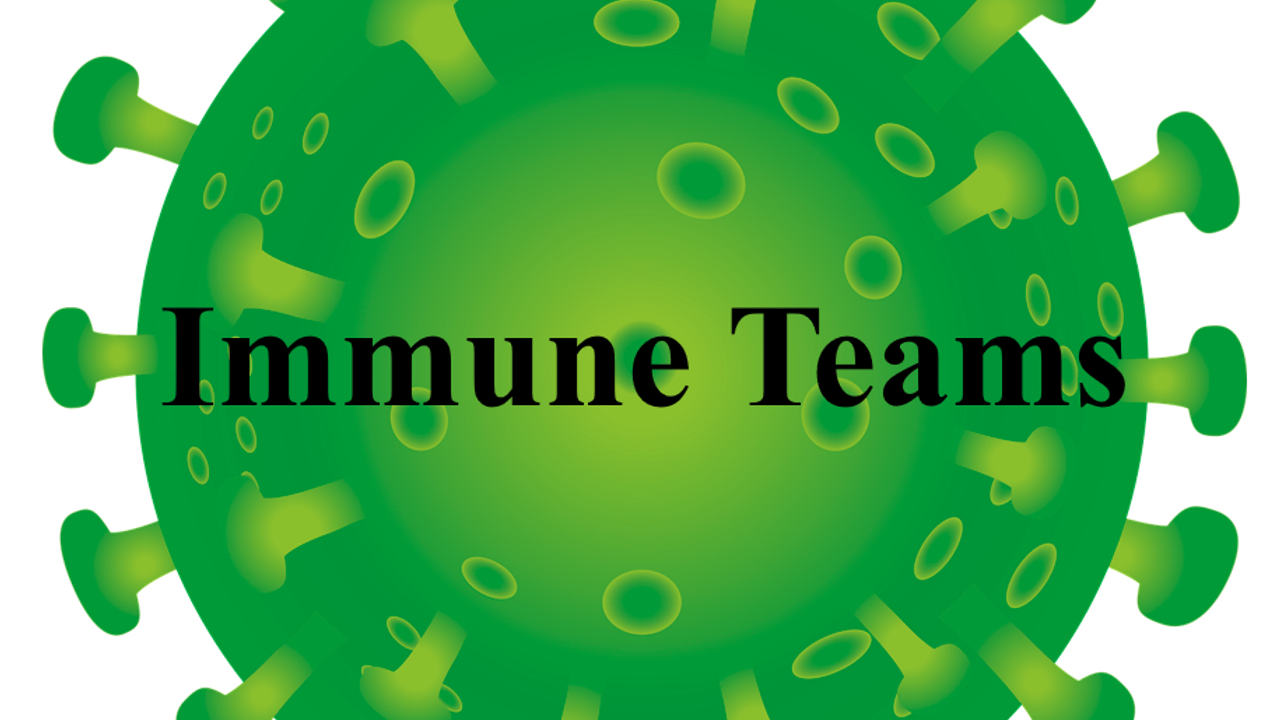Immune Teams
Feb 28, 2022
Not only were you born with an immune system comprised of a myriad of cell types working together to defend your body, this system was endowed with a communication network so complex that we are still learning how it works. One might think of the immune system as either on-duty or off-duty, relying on an on-off switch to respond. Instead, our immune system is always on with weapons loaded and ready patrolling every tissue of our body. This full-body, full time system requires numerous messenger systems to carry out this critical work.
It has to distinguish our cells from microbes or infected cells. It has to target the correct microbes with the correct weapons, without significant damage to surrounding self-tissue. It has to control itself to not overreact and must turn off when the battle is over. It has to control all of this across thousands if not millions of cells working together. Let’s review a few of these messengers so that you can better understand medical news reports and better guide your own health.
Just like talking to someone standing next to you, our immune system has means of communicating with nearby cells. By placing different proteins on their surfaces, the immune cells can tell neighboring cells who they are, what microbes they are seeing in the neighborhood, and what they should do next. If a cell finds an invading microbe and kills it, some cells can put a piece of that dead invader on their own surface next to other surface messengers that tell other cells there is an invasion and it’s time to fight. This serves the system very well in small, localized battles.
In order to communicate across the body, the team members of the immune system need messengers for long distance communication, besides the surface proteins above. Various chemical messengers are sent out from the cell to pass on the messages. Cytokines, chemokines, and other chemicals relay the necessary information near and far. Various cells, both immune and non-immune, produce these messengers. The messengers pass information on to other cells and turn the volume of other cell's activities up or down.
These messages are necessary to recruit more cells to the battlefield and turn sleeping cells into awakened soldiers. After the battle different messengers turn down the alarms and turn down the activated cells. They trigger and encourage healing mechanisms to replace the inflammation.
For everyday immune prepping, these messengers can remain mostly unnamed.
At most, recognizing the names of a few groups suffices. Cytokines are small peptides, short chains of amino acids similar to proteins. Cells use them to send messages to other cells about enemy activity.
They bind receptors on other cells and change their behavior. Some examples of cytokine messengers are called interferons. Some have been enlisted by pharma to attack different diseases. You may hear of interferon alpha, beta, or gamma. Each one serves different purposes and produces different effects.
There are also interleukin cytokines of many types. Some push immune response towards more antibodies, some towards more cellular attack, and some towards a calmer state. The different interleukins are numbered so that scientists can keep up with them in the medical literature. Like the interferons, each serves different purposes and produces different effects.
We also find chemokines as another group of small peptides (short strings of amino acids) secreted as immune messengers. They are released by various cells and cause other cells to move towards the invasion site.
From there, we could spend pages on the wide variety of simple chemicals that immune cells can use to communicate with nearby cells. We will only mention histamine, something that most people know from allergic symptoms in themselves or someone they know. This simple molecule of carbons, hydrogen, and nitrogen is released by different immune cells and triggers a variety of reactions in the tissue near and far. Locally, swelling occurs as the histamine opens blood vessel walls to let out more fluid into the tissue. A little more distally, the histamine recruits more cells to the area. If the levels are high enough, watery noses, itchy eyes, itchy and red skin can inflict symptoms on your daily life.
Proceeding beyond this surface level description of our immune system communications network would take chapters if not books. This short introduction helps you with knowing that you are equipped to handle immune threats. From there, you can at least understand some of the terminology bantered about in medical news reports and studies. When you are ready to go beyond these basics, our Immune Prepper 101 can take you a step further in preparing for the 2020’s and beyond.
What is your Immune System telling you?
What have we learned in the past couple of years, especially since the outbreak of a global pandemic?
Your Immune System CAN'T be ignored!
NOW is the time to prep your immune system...because we face a myriad of viruses, bacteria, mold, and toxins EVERY DAY! Only a strong immune system will truly combat these potential threats.
Take the Immunity Quiz today to see how YOUR immune system ranks and how prepared you truly are!
Free Online Program:
Natural Allergy Therapies
Stop letting Allergies slow you down! Follow Dr. Eric Potter's proven strategies for reducing or eliminating Allergies.
We hate SPAM. We will never sell your information, for any reason.


